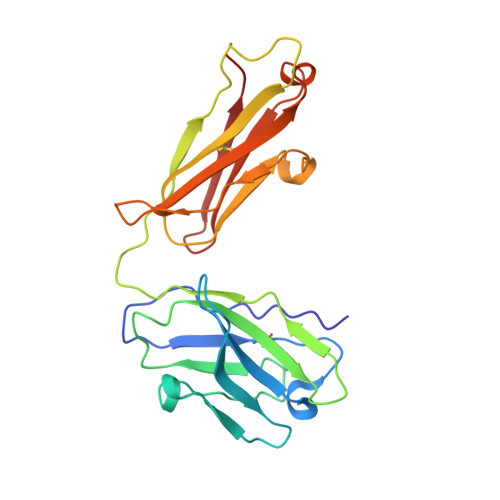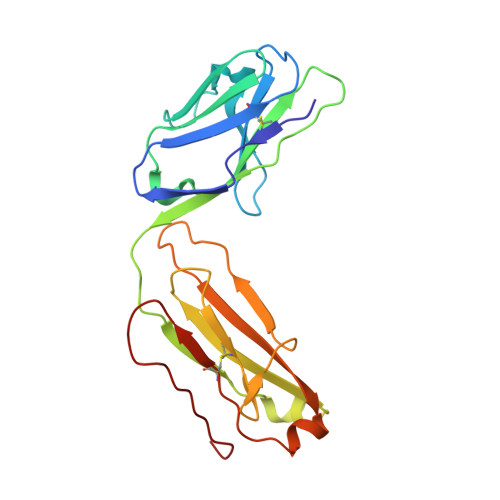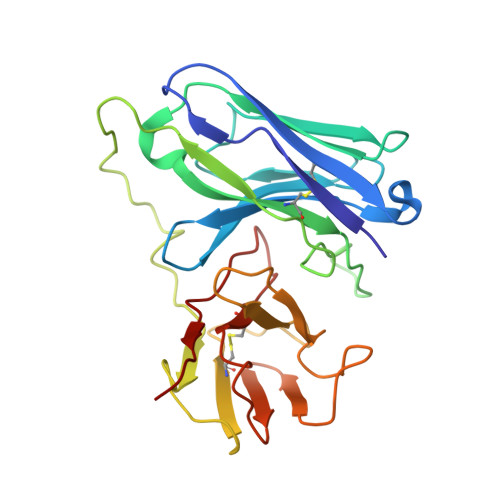A novel bispecific antibody targeting two overlapping epitopes in RBD improves neutralizing potency and breadth against SARS-CoV-2.
Sun, H., Xia, L., Li, J., Zhang, Y., Zhang, G., Huang, P., Wang, X., Cui, Y., Fang, T., Fan, P., Zhou, Q., Chi, X., Yu, C.(2024) Emerg Microbes Infect 13: 2373307-2373307
- PubMed: 38953857
- DOI: https://doi.org/10.1080/22221751.2024.2373307
- Primary Citation of Related Structures:
8YWW, 8YWX - PubMed Abstract:
SARS-CoV-2 has been evolving into a large number of variants, including the highly pathogenic Delta variant, and the currently prevalent Omicron subvariants with extensive evasion capability, which raises an urgent need to develop new broad-spectrum neutralizing antibodies. Herein, we engineer two IgG-(scFv) 2 form bispecific antibodies with overlapping epitopes (bsAb1) or non-overlapping epitopes (bsAb2). Both bsAbs are significantly superior to the parental monoclonal antibodies in terms of their antigen-binding and virus-neutralizing activities against all tested circulating SARS-CoV-2 variants including currently dominant JN.1. The bsAb1 can efficiently neutralize all variants insensitive to parental monoclonal antibodies or the cocktail with IC 50 lower than 20 ng/mL, even slightly better than bsAb2. Furthermore, the cryo-EM structures of bsAb1 in complex with the Omicron spike protein revealed that bsAb1 with overlapping epitopes effectively locked the S protein, which accounts for its conserved neutralization against Omicron variants. The bispecific antibody strategy engineered from overlapping epitopes provides a novel solution for dealing with viral immune evasion.
Organizational Affiliation:
Institute of Biotechnology, Academy of Military Medical Sciences, Beijing, People's Republic of China.

















